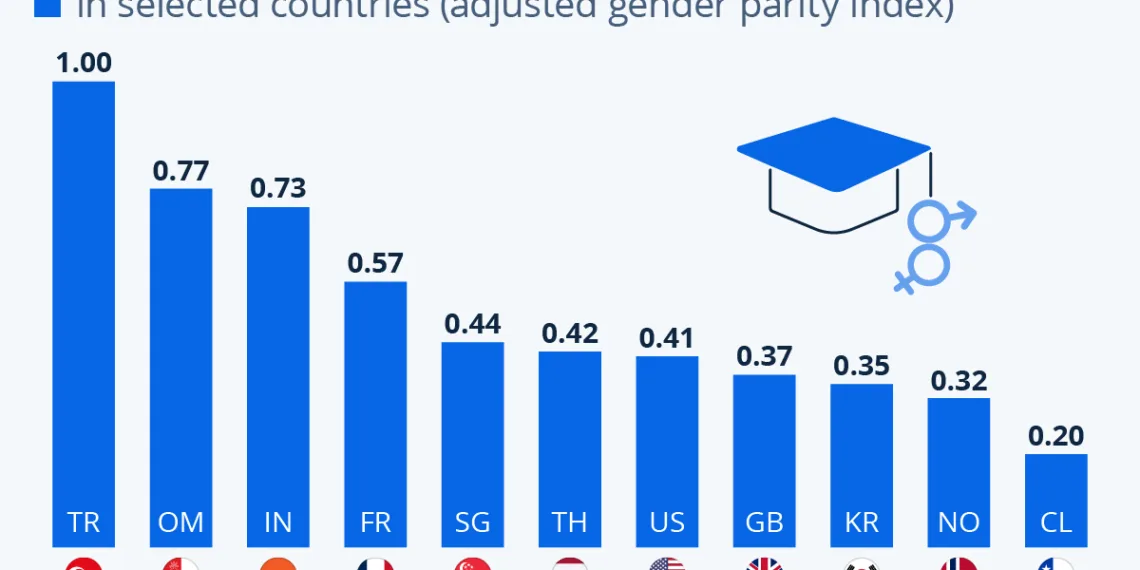Understanding the STEM Gender Gap in Education
The growing importance of STEM (Science, Technology, Engineering, and Mathematics) fields in today’s economy underscores the need for diverse participation. However, despite ongoing efforts to enhance female representation in these disciplines, a notable gender gap persists worldwide. This blog delves into the intricacies of this issue, analyzing data provided by UNESCO regarding representation in STEM education.
Global Perspectives on Gender Parity in STEM
UNESCO’s extensive research has provided valuable insights into enrollment trends in STEM disciplines during tertiary education—this refers to any education undertaken after the completion of secondary school, including universities and vocational programs. The data collected enables a comparison across various countries, highlighting disparities and progress.
The Gender Parity Index Explained
UNESCO employs the Gender Parity Index (GPI) as a key metric for evaluating equity in educational attainment. The GPI scores range from 0 to more than 1:
- A score of 1 indicates complete gender parity, suggesting equal representation of both sexes in STEM.
- Scores between 0 and 1 reflect a male-favoring disparity, where fewer women enroll in or complete STEM programs.
- Scores above 1 indicate a female-favoring disparity, where women exceed men in these education fields.
Country-Specific Insights into Female Representation
While some countries are making strides toward gender parity in STEM education, significant disparities remain prevalent in many regions.
Notable Exceptions: Turkey and Mauritania
A few countries stand out for their relatively balanced or even favorable ratios of women graduating from STEM programs compared to their male counterparts:
- Turkey (2022): This nation showcases a near parity in the number of women and men graduating from STEM fields.
- Mauritania (2020): Although specific data points were not featured in certain analyses, this country is regarded as another example where women are achieving similar or slightly higher rates of graduation in STEM.
The European Landscape: A Striking Disparity
In comparison, many European nations show stark underrepresentation of women in STEM:
- Germany: With a GPI score of 0.37, women are significantly underrepresented in STEM programs.
- United Kingdom: Also with a score of 0.37, similar trends are observed.
- Norway: This country records a particularly low GPI of 0.32, further illustrating the challenges faced in achieving gender parity.
Asian Nations: Better Representation of Women in STEM
Some Asian countries present a more favorable scenario for female participation in STEM disciplines:
- India: With a GPI of 0.73, more women are enrolling and graduating in STEM compared to many Western nations.
- Malaysia and Singapore: Scores of 0.48 and 0.42, respectively, indicate a progressive trend toward closing the gender gap in STEM education, reflecting better access and support for women in these fields.
Challenges and the Way Forward
The data compiled by UNESCO highlights not just where disparities exist, but also signifies the progress being made in certain areas. Nonetheless, persistent challenges remain across the globe, such as:
- Societal perceptions and stereotypes regarding gender roles.
- Structural barriers within educational institutions that hinder women’s participation.
- Lack of mentorship and role models for aspiring female STEM students.
In response to these challenges, concerted efforts from educational institutions, governments, and organizations dedicated to fostering inclusivity in STEM are essential. By focusing on creating equitable opportunities and promoting gender diversity, the hope is not just to close the gap, but to unlock the full potential of diverse minds in innovation and technological advancement.






